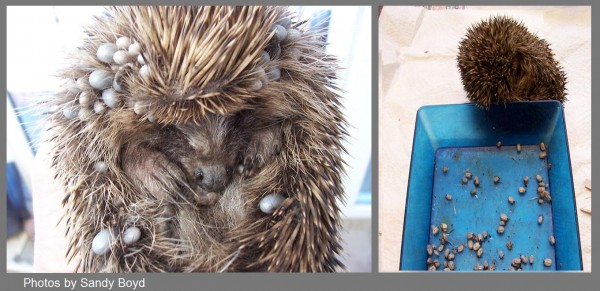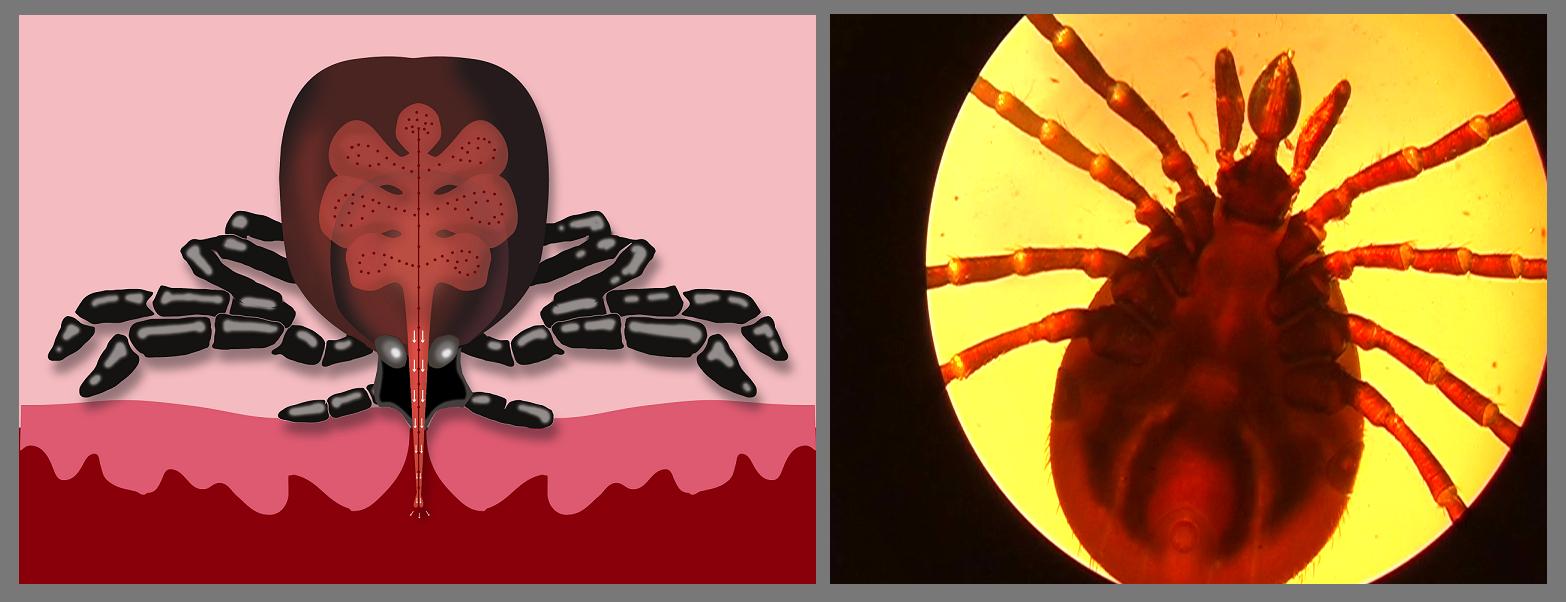Disease transmission video
The tick’s hosts (the person or animal the tick feeds on), and the ticks themselves, can be long-term reservoirs for certain viruses, bacteria and protozoa. ‘Reservoir-competent’ ticks (which means that they have the ability to maintain an organism internally) can pass certain pathogens transovarially (through the egg) from generation to generation. Certain pathogens (disease-causing organisms) can also be passed throughout the developmental stages of the tick (transstadially). This causes a proliferation of infected vector ticks (tick’s that have the ability to transmit disease).
When the tick’s hosts are reservoir-competent, the ticks can become infected during feeding and go on to pass that infection to their next host. Some hosts are not reservoir-competent and only serve to nourish the tick through the stages of its life cycle.
Infection risk is determined by the population of reservoir-competent animal species and the local density of the tick population. As this can vary from month to month or year to year, it is impossible to accurately predict the level of infection risk.
Blackbirds, foxes, grey squirrels and hedgehogs are all competent hosts for the Lyme disease bacterium
In the wild, a state of natural balance usually exists between tick-transmitted organisms and their hosts. This is termed ‘enzootic stability’. Clinical disease usually occurs only in stressed or immune-compromised animals. However, a stable enzootic cycle of disease can easily change to an unstable epizootic cycle. This can occur when domestic stock is introduced, and when rural areas become partly urbanised.

The introduction of new domestic-animal and human hosts can give rise to the serious spread of zoonotic disease, which can become an epidemic. An increase in the tick population and in host availability can escalate the spread of disease.
Ticks possess certain characteristics that make them highly efficient vectors of disease:
- Adaptability – Man’s increasing encroachment on the wild habitat has allowed ticks to adapt to feeding on domestic stock, pets and humans. New hosts, having not been previously exposed to such pathogens, have no immunity and thus succumb to disease. Ticks can also adapt to climate change by entering a state of torpor.
- Firm attachment – Ticks are hard to dislodge, lying close to the skin amongst hair, feathers or scales. This makes them difficult for the host to groom out and allows the tick plenty of time to feed in relative security.
- High agent dispersal – By selecting mobile hosts, such as large mammals or birds, ticks can be transported to new regions either locally or across oceans. This helps spread disease far and wide.
- High reproductive potential – Dermacentor and Ixodes species lay approximately 1-10,000 eggs, while Hylomma species lay 10,000 or more.
- Slow feeding – This allows ample time for ingestion, and transmission of large quantities of infective agents. Argasids and certain male Ixodids will take multiple feeds, increasing the opportunity for transmission to occur.
- Starvation resistance – Argasids can endure long periods without food by slowing their metabolic rate and entering a state of torpor, which can last a year or more until a host is found.
- Wide host range – Throughout its life cycle, Ixodes ricinus will feed on small to large mammals, birds and reptiles, spreading disease throughout a wide variety of fauna.
- Versatile saliva – Tick saliva is produced during the biting and feeding process. It has anaesthetic, anticoagulant, anti-inflammatory, immunosuppressive, and (in the case of Ixodids) adhesive properties. The introduction of saliva allows the transmission of disease agents. The importance of saliva in disease transmission is considerable.

Compressing a tick can cause back flow of saliva (seen around the tick’s mouth parts), which may contain disease-causing organisms
In the July 28th 2005 edition of ‘Nature’, researchers at Yale University reported that Borrelia burgdorferi (the bacterium which causes Lyme disease) activates a gene in the tick, boosting production of an immunosuppressive salivary protein called ‘Salp-15’. Borrelia bacteria bind to this protein. As the tick bites, the Salp-15-coated bacteria enter the skin. This allows them to remain invisible to the host’s immune cells so they can multiply and spread to other organs.
Other studies have revealed that ticks have a special receptor called the ‘tick receptor’ or ‘TROSPA’ for the outer surface protein A or ‘OspA’ of Borrelia burgdorferi. It is situated on the inner wall of their intestines. Attachment to TROSPA enables B. burgdorferi to persist in the gut after they are ingested by the tick, and remain through the tick’s subsequent moults. This way they avoid elimination and can be inoculated into a new host when the tick takes its next blood meal (Cell 119: 475, 2004).
When the tick takes its next meal, the production of OspA is reduced and an increased production of OspC (another cell surface protein) occurs. This enables the Borrelia in the tick’s gut to become detached and to migrate to the salivary glands, where they become inoculated into the new host.
Many ixodids can transmit a variety of diseases, including Lyme disease (Borreliosis), Babesiosis, Anaplasmosis / Ehrlichiosis, Bartonellosis, Q-fever and the Louping ill virus.
For comprehensive information on the diseases transmitted by British ticks, see our ‘Diseases’ section. For tick-borne disease in companion animals, see our Veterinary Animal/Pet section.






